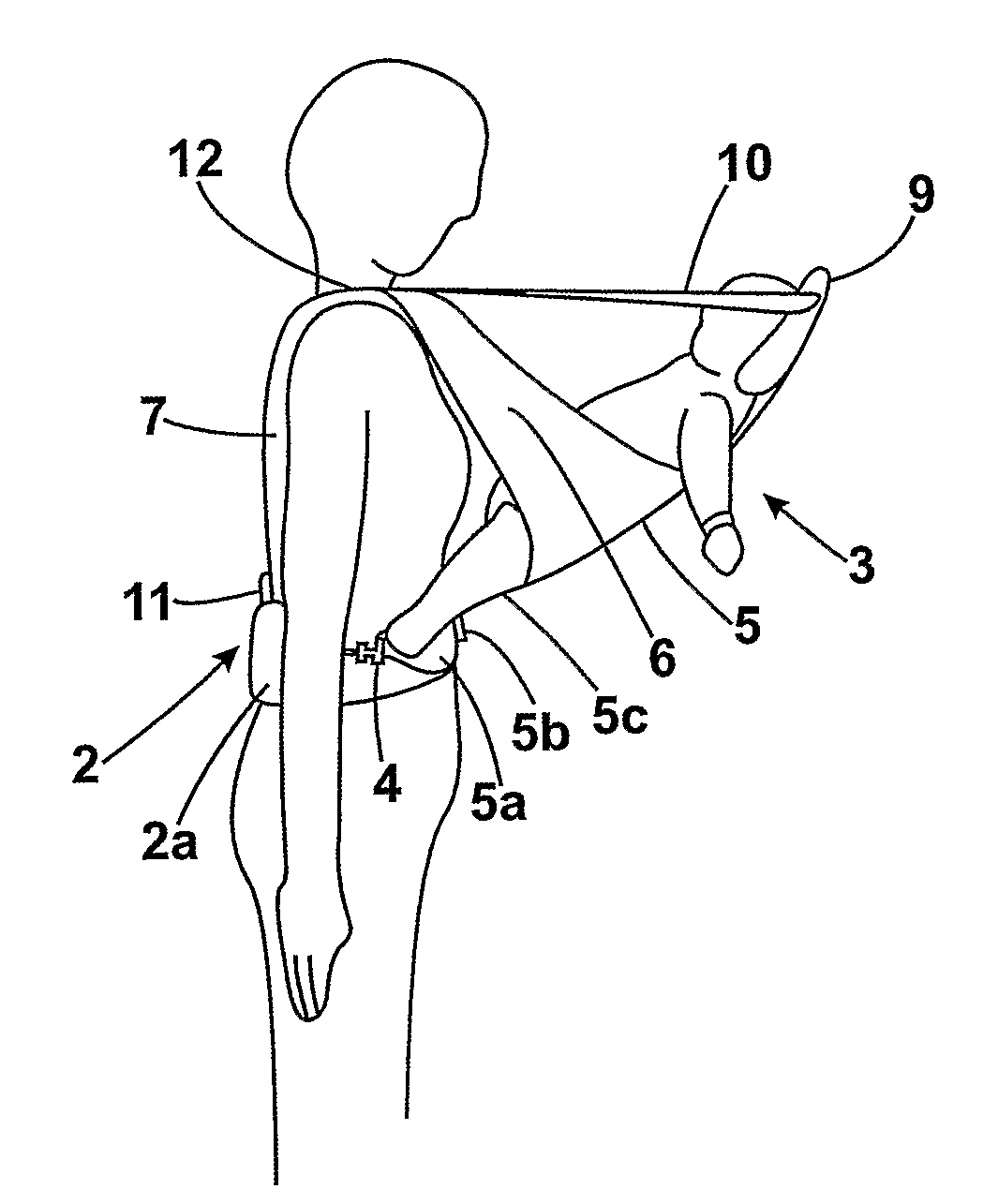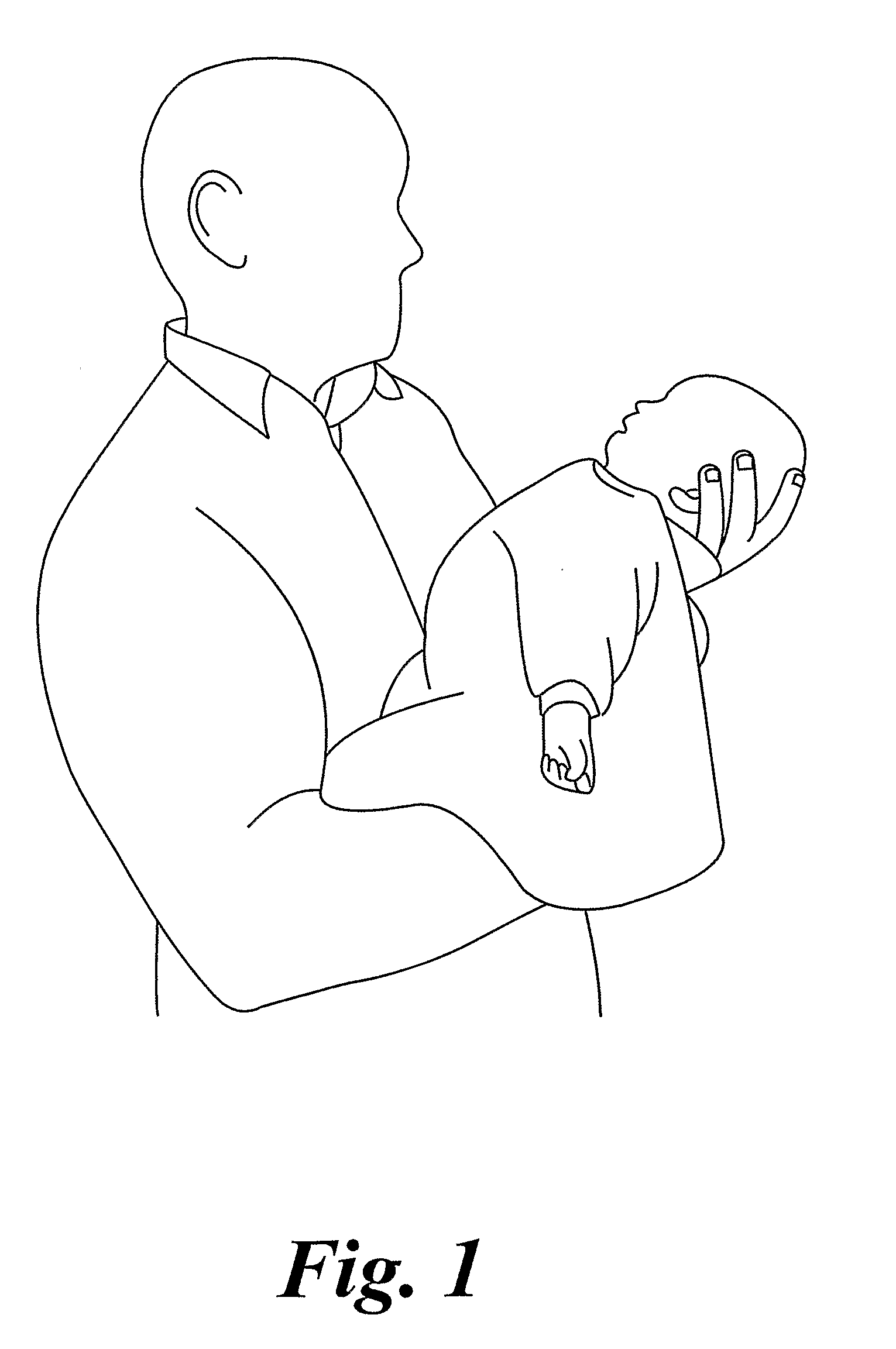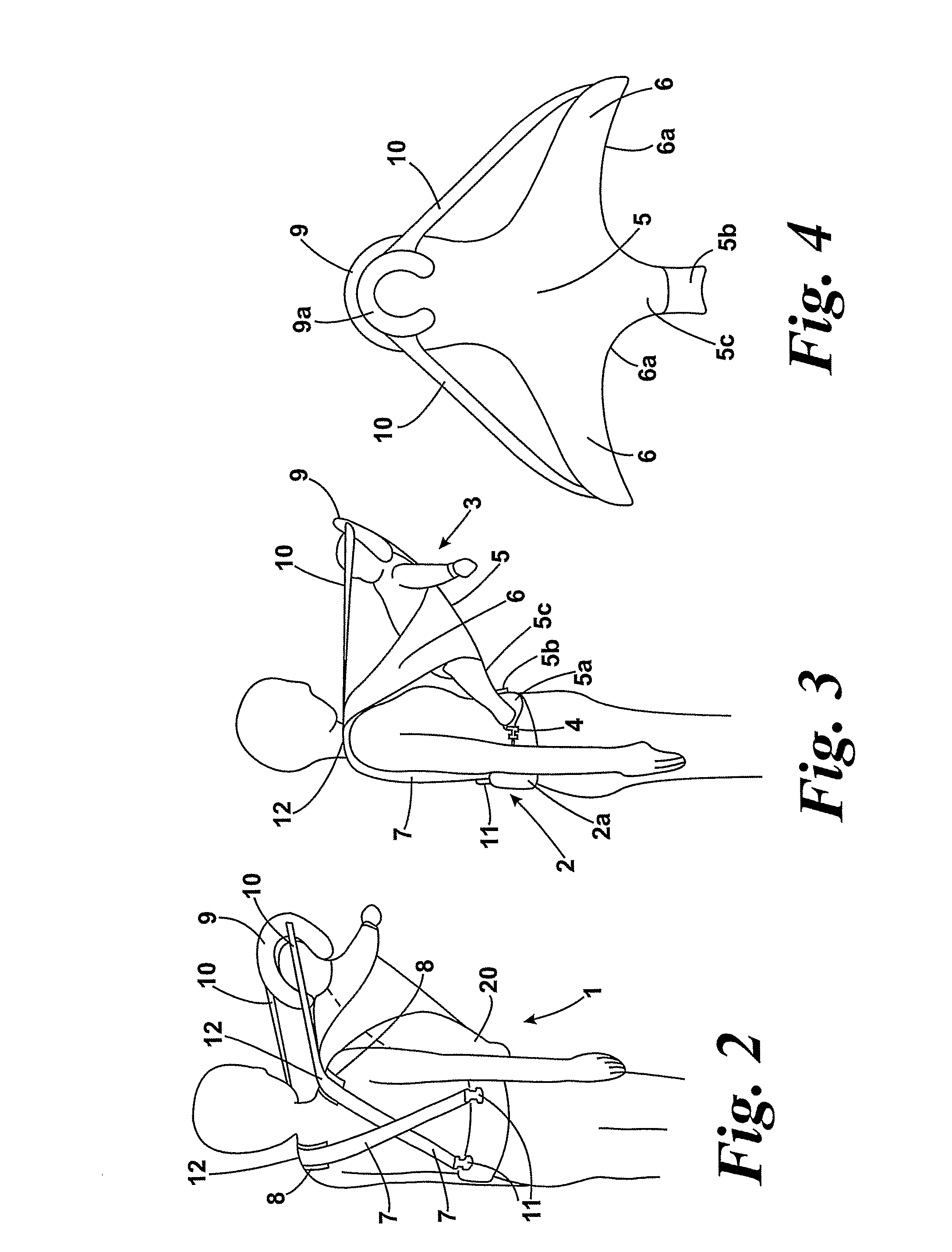Infant sleep sling
- Summary
- Abstract
- Description
- Claims
- Application Information
AI Technical Summary
Benefits of technology
Problems solved by technology
Method used
Image
Examples
Embodiment Construction
[0037]FIG. 1 illustrates an infant being supported by an adult carrier such that the infant's bottom rests on the abdomen of the carrier and the infant's legs rest to the sides of the carrier's abdomen. This is the position which has been found to both alleviate colic and induce sleep in over tired infants. However, holding an infant in the position shown in this Figure, even a 6 week old infant, would result in tiredness in the adult after a relatively short time. Further, the carrier may begin to experience back pain and cannot utilise their hands in any other way than holding the infant.
[0038]Referring now to FIGS. 2 and 3, there is shown a sling 1 which comprises a harness 2 for attachment to a carrier. The harness 2 comprises a belt 2a for attachment to the waist of the carrier and shoulder straps 7, which are attached to the rear of the belt 2a by clips 11 and to the front of the belt either by stitching or clips similar to clips 11. At the point where the shoulder straps pass...
PUM
 Login to View More
Login to View More Abstract
Description
Claims
Application Information
 Login to View More
Login to View More - R&D
- Intellectual Property
- Life Sciences
- Materials
- Tech Scout
- Unparalleled Data Quality
- Higher Quality Content
- 60% Fewer Hallucinations
Browse by: Latest US Patents, China's latest patents, Technical Efficacy Thesaurus, Application Domain, Technology Topic, Popular Technical Reports.
© 2025 PatSnap. All rights reserved.Legal|Privacy policy|Modern Slavery Act Transparency Statement|Sitemap|About US| Contact US: help@patsnap.com



